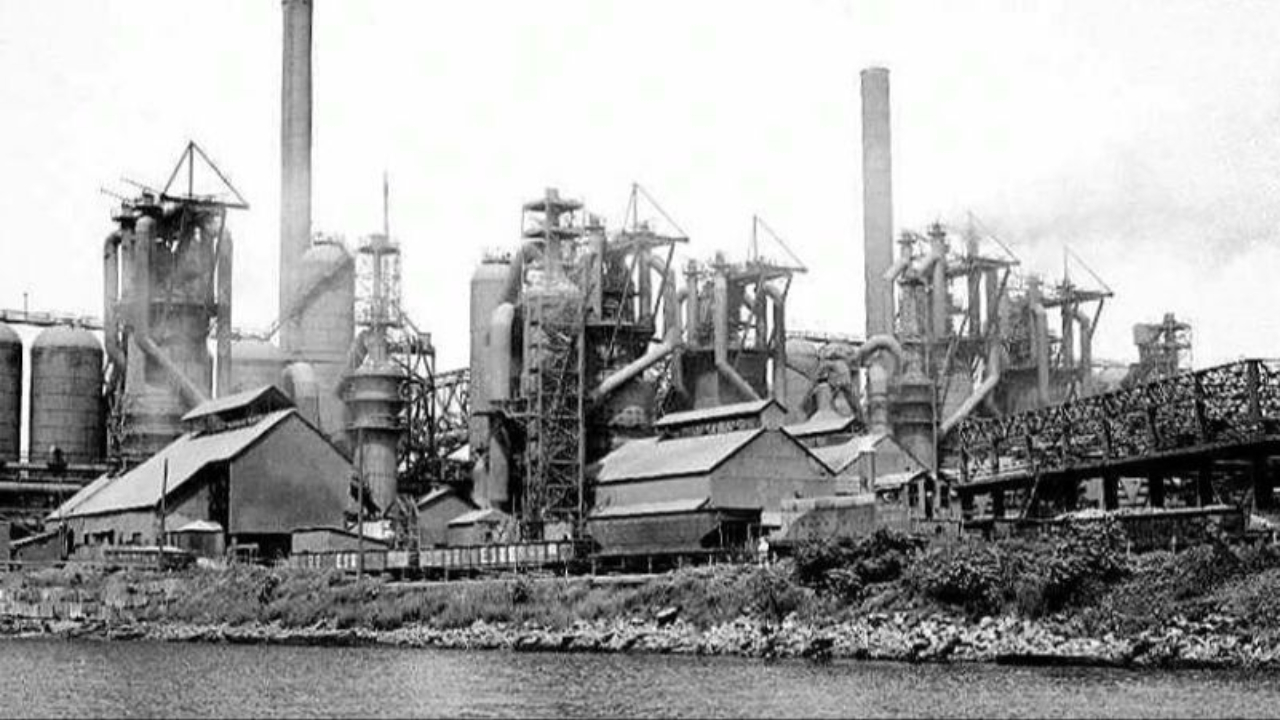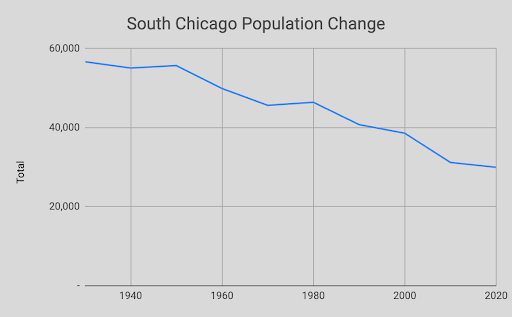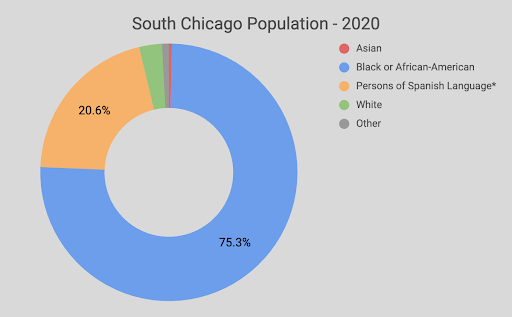South Chicago: Steel, Shorelines, and a Community Ready for the Next Chapter
Oct 29, 2025
Introduction
Tucked along the lakefront where the Calumet River meets Lake Michigan, South Chicago is a neighborhood defined by industry, migration, and reinvention. Bordered roughly by 79th Street to the north, 95th Street to the south, South Chicago Avenue to the west, and Lake Michigan to the east, the community has for over a century been shaped by steel mills, immigrant families, and the grind of blue-collar life. As the age of large‐scale steel faded, South Chicago found itself at a crossroads—but its spirit remains firmly rooted in resilience, identity, and hope.
Trivia Question
Which legendary blues musician, who worked in the steel mills of South Chicago after moving north during the Great Migration, would go on to become a major figure in Chicago’s music scene?
(Answer at the end of this post)
South Chicago by the Numbers



Origins and Early History
Long before smoking blast furnaces and steel railcars, the land that became South Chicago was part of the natural shoreline and marshes of the Calumet River delta. Native American groups such as the Potawatomi used the area for fishing, hunting, and as seasonal campsites.
The industrial transformation began in earnest when the North Chicago Rolling Mill Company established a facility here in 1881. The site offered easy access to raw materials via the lake and river, and the rail lines followed soon after. As the steelworks expanded, so did the neighborhood. Immigrants from Poland, Italy, Lithuania, and other parts of eastern Europe arrived seeking stable employment. Neighborhood housing sprang up rapidly—frame cottages, long narrow “shoestring lots,” and two-flats filled with factory and mill workers.
In 1889, South Chicago was officially annexed into the City of Chicago, setting the stage for major residential and infrastructure growth. The mill complexes, rail lines, and workers’ neighborhoods formed a tightly woven community ethic—the kind of place where the plant whistle bleeded into daily life, and where fathers, brothers and sons walked to their shifts with steel-toed boots.
Transformation and Evolution
By the early 20th century, the full industrial weight of South Chicago had arrived. The U.S. Steel Corporation acquired the South Works plant in 1901 and over subsequent decades grew it into a massive facility covering hundreds of acres between 79th Street and the lake. It employed up to 20,000 workers at its peak.
The physical environment carried the imprint of industry: slag-filled land, ore walls along the lake, and thick air from the furnaces. One writer described the neighborhood early on as “wet, low land cut by ditches clogged with soot, garbage, and industrial debris.” Housing was often cheap and overcrowded near the mills, but wages were comparatively strong, making South Chicago a vital entry point for many immigrant families.
The Great Migration brought new chapters. In the early to mid-20th century African American families migrated from the South and found employment in the steel and manufacturing jobs here, changing the demographic fabric of the neighborhood. Through the 1940s and ’50s, neighborhoods around Commercial Avenue, 92nd Street and nearby corridors flourished with commerce, social clubs, and industry-influenced culture.
Yet the later 20th century brought turbulence. Global competition, mechanization, and shifting materials undercut the U.S. steel industry. The South Works plant wound down in the 1980s and then closed permanently in 1992. With it went thousands of jobs—and decades of steady community economic footing. The housing market faltered, storefronts closed, and environmental legacies (contaminated land, slag heaps) became complex liabilities.
Historical Landmarks and Structures
- South Works Steel Mill Site (along the lakefront from about 79th Street south to the Calumet River) – The massive former U.S. Steel facility dominated the neighborhood’s geography and economy for a century, employing tens of thousands and building the steel that helped create Chicago’s skyline.
- Steelworkers Park (87th Street & Lake Shore Drive) – A converted portion of the former mill site now repurposed as green space, honoring the labor legacy of the workers who built Chicago.
- St. Michael the Archangel Church (83rd Street & South Shore Drive) – Built in 1909, this Polish Catholic parish is a strong cultural and architectural anchor for the neighborhood’s immigrant past.
- Commercial Avenue & 92nd Street Corridor – While not a single structure, this historic commercial district once housed dozens of small businesses supporting the steel-era workforce, reflecting the social core of South Chicago’s working-class life.
Historical Figures from South Chicago
- Gary Comer – Born and raised in South Chicago, Comer later founded the clothing company Lands’ End. His philanthropy increasingly engaged with his old neighborhood.
- Gwendolyn Brooks – While often associated with Bronzeville, Brooks lived for decades on South Evans Avenue in South Chicago (7428 S. Evans), writing poems that captured the life of Black Chicago neighborhoods.
- William A. Rowan – A local leader and U.S. House Representative (1943–47) whose papers are housed in the South Chicago Community Collection; represented the 10th Ward including South Chicago during a key mid-20th century era of change.
Little-Known Historical Fact
One lesser-told story: At its industrial height, the steel produced in South Chicago didn’t just serve the local economy, it built America’s. The South Works facility made I-beams and angle bars used in iconic skyscrapers across the nation;
Historical Events
- Annexation to Chicago (1889) – The neighborhood’s incorporation into the City of Chicago laid the groundwork for rapid industrial and residential expansion.
- Peak Industrial Era (~1930s–1950s) – During this period, roughly 70% of adult men in the neighborhood were employed by steel or related industries, making South Chicago one of the most heavily industrial-dependent communities in the U.S.
- Closure of South Works (1992) – The permanent shuttering of the U.S. Steel facility marked the end of an era and triggered decades of economic and environmental challenges in the community.
Current Trends and Redevelopment
While the steel plants may be gone, South Chicago is far from forgotten. Redevelopment plans for the former mill site stretch across hundreds of acres and envision mixed-use housing, green space, lakefront trails, and possibly a research campus.
On the residential front, South Chicago remains largely African American (about 75 %) with a growing Latino presence (approximately 20%) and household incomes well below citywide averages. Despite persistent challenges, legacy environmental cleanup, vacant lots from demolished mill housing, and job scarcity community groups like the South Chicago Neighborhood Network and local block clubs are rebuilding social infrastructure, mentoring youth, and advocating for investment.
Parks, lakefront trails, and former industrial sites are being reimagined. The transformation of steel-ruined land into open space offers both the physical and metaphorical possibility of renewal. Many residents now describe the neighborhood not just as a “steel town,” but as a place of opportunity rooted in history but looking ahead.
Conclusion
South Chicago may be defined by its steel heritage, but its story is far richer: immigrants shaping the skyline, Black and Latino families forging community, and a neighborhood that refuses to fade despite the loss of its industrial base. Where slag once piled, hope now stirs. From the limestone shores of Lake Michigan to the factories and homes that followed, South Chicago stands as a testament to the power of reinvention—and to the enduring spirit of a neighborhood that built a city.
Trivia Answer:
That legendary blues musician is Muddy Waters, who worked in the steel mills of South Chicago after moving north from Mississippi in the 1940s and went on to help define the Chicago blues sound.
Stay connected with news and updates!
Join our mailing list to receive the latest news and updates from our team.
Don't worry, your information will not be shared.
We hate SPAM. We will never sell your information, for any reason.

